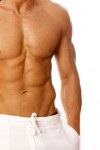
Real Definition

100% Traditional East Asian Herbal Medicine
With NO Fillers

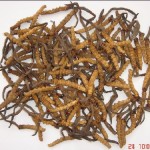 A while back I wrote about a type of mushroom called Cordyceps used in Chinese medicine which sells for $100.00 an ounce or even more. (Click here for that article) Here’s one reason this herb/fungus is such a prized possession. The very prestigious, University of Nottingham just published the findings from researchers there who have discovered how this mushrooms works within our bodies.
A while back I wrote about a type of mushroom called Cordyceps used in Chinese medicine which sells for $100.00 an ounce or even more. (Click here for that article) Here’s one reason this herb/fungus is such a prized possession. The very prestigious, University of Nottingham just published the findings from researchers there who have discovered how this mushrooms works within our bodies. 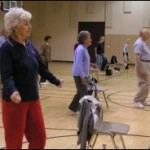 The Struthers Parkinson’s Center in Minneapolis teaches a form of Tai Chi and both The Cleveland Clinic and the Stanford School of Medicine recommend Tai Chi for Parkinson’s sufferers. This healing art, or should I say Chinese medicine, developed over a 1000 years ago are a series of slow, flowing movements that can help maintain flexibility, balance and coordination.
The Struthers Parkinson’s Center in Minneapolis teaches a form of Tai Chi and both The Cleveland Clinic and the Stanford School of Medicine recommend Tai Chi for Parkinson’s sufferers. This healing art, or should I say Chinese medicine, developed over a 1000 years ago are a series of slow, flowing movements that can help maintain flexibility, balance and coordination. 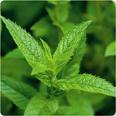 Over indulgence and holidays seems to go hand in hand. Rich, tempting food seems to be everywhere, leaving us with heartburn and indigestion. For thousands of years people have turned to natural plants to relieve their suffering from acid reflux, heartburn and indigestion. Many found Chinese herbs, fruits and roots were the answer to what ailed them. Here are a four herbal remedies from the history books that helped back then and still help today with the age old problem of indigestion.
Over indulgence and holidays seems to go hand in hand. Rich, tempting food seems to be everywhere, leaving us with heartburn and indigestion. For thousands of years people have turned to natural plants to relieve their suffering from acid reflux, heartburn and indigestion. Many found Chinese herbs, fruits and roots were the answer to what ailed them. Here are a four herbal remedies from the history books that helped back then and still help today with the age old problem of indigestion.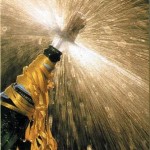 It is nearly the end of another year and always a time for reflection. If you are like me you give yourself an annual report card on your year. Or you just skip the judgment phase and simply create some New Years Resolutions of things to change. My report card for the year would say something like “valiant effort, but balance needs improvement”. The “balance” I promised myself each day didn’t quite materialize the way I had hoped, so my New Years Resolution is to change that and find more balance. What is this balance I'm referring to?
It is nearly the end of another year and always a time for reflection. If you are like me you give yourself an annual report card on your year. Or you just skip the judgment phase and simply create some New Years Resolutions of things to change. My report card for the year would say something like “valiant effort, but balance needs improvement”. The “balance” I promised myself each day didn’t quite materialize the way I had hoped, so my New Years Resolution is to change that and find more balance. What is this balance I'm referring to? The recent news about urinary tract cancer linked to the ingestion of a Chinese herb called Mu tong should spark awareness about herbal medicine suppliers. Fortunately in the U.S. single herbs and formulas containing Mu tong or Aristolochic Acid has been banned since 2000, they cannot be imported.
The recent news about urinary tract cancer linked to the ingestion of a Chinese herb called Mu tong should spark awareness about herbal medicine suppliers. Fortunately in the U.S. single herbs and formulas containing Mu tong or Aristolochic Acid has been banned since 2000, they cannot be imported. 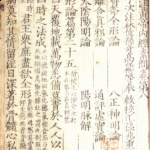 2000 years ago today, the year was AD 9. (on most calendars anyway) No cell phones, no cars, no health insurance. Things were pretty different, or were they? People still talked without cell phones, traveled without cars and got sick without insurance. What hasn’t changed in 2000 years is herbal medicine. Specifically, Chinese herbal medicine is not much different than what we use today.
2000 years ago today, the year was AD 9. (on most calendars anyway) No cell phones, no cars, no health insurance. Things were pretty different, or were they? People still talked without cell phones, traveled without cars and got sick without insurance. What hasn’t changed in 2000 years is herbal medicine. Specifically, Chinese herbal medicine is not much different than what we use today. 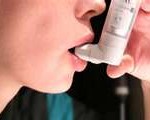 Yes, Chinese herbs for asthma sufferers. This comes straight from the horses mouth, the American Academy of Allergy, Asthma and Immunology. Stated in September 2005, “This is the first well-controlled study in which an anti-asthma Chinese herbal medicine has been found to be as effective as a corticosteroid drug. Additional clinical studies of ASHMI in the USA are planned.”
Yes, Chinese herbs for asthma sufferers. This comes straight from the horses mouth, the American Academy of Allergy, Asthma and Immunology. Stated in September 2005, “This is the first well-controlled study in which an anti-asthma Chinese herbal medicine has been found to be as effective as a corticosteroid drug. Additional clinical studies of ASHMI in the USA are planned.” 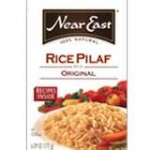 I was making dinner tonight, nothing special, chicken, rice pilaf and salad. I’ve love the Near East brand of Rice Pilaf and have used it for years. So what’s so special to make me write about this. Well, Near East is a well known, multi-million dollar company who has done their share of research on packaging their products. A small cardboard box holds the rice and a FOIL PACKET holds the herbs and spices, the secret ingredients that give the rice that great flavor.
I was making dinner tonight, nothing special, chicken, rice pilaf and salad. I’ve love the Near East brand of Rice Pilaf and have used it for years. So what’s so special to make me write about this. Well, Near East is a well known, multi-million dollar company who has done their share of research on packaging their products. A small cardboard box holds the rice and a FOIL PACKET holds the herbs and spices, the secret ingredients that give the rice that great flavor. 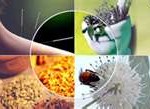 As patient awareness of health and disease prevention has grown, so too has their interest in alternatives to traditional therapeutic disease-based options. The National Center for Complementary and Alternative Medicine (NCCAM) defines Complementary and Alternative Medicine (CAM) as "a group of diverse medical and health care systems, practices, and products that are not currently part of conventional medicine." This may soon change with new health care legislation on the horizon.
As patient awareness of health and disease prevention has grown, so too has their interest in alternatives to traditional therapeutic disease-based options. The National Center for Complementary and Alternative Medicine (NCCAM) defines Complementary and Alternative Medicine (CAM) as "a group of diverse medical and health care systems, practices, and products that are not currently part of conventional medicine." This may soon change with new health care legislation on the horizon.Patients are often reluctant to discuss the use of CAM with their physicians for fear of being rebuked or dismissed. Many physicians view alternative-based therapies as "quackery" and adopt an attitude of "semi-indulgent contempt," as described by one physician. Further complicating matters is the relative lack of practitioner knowledge and training on CAM modalities. Nudged forward by patient demand, this view is clearly changing and now more than 70 medical schools and 45 medical centers, including The Mayo Clinic and The Cleveland Clinic, have adopted integrative and alternative medical centers.
Check out this informational video about PMS Relief. Click below:
Natural Menstrual Cramp Relief with Pacific Herb's PMS Relief
 Natural products like Chinese herbs have become increasingly important for new pharmaceutical discoveries. Chinese Herbs and other phyto-medicinals are being widely studied particularly for cancer treatments. Currently more than 60% of cancer drugs are of plant origin. New research on the Chinese herb called Ye Ju Hua or Wild Chrysanthemum flower shows anticancer activities and could be a valuable resource in the fight against cancer.
Natural products like Chinese herbs have become increasingly important for new pharmaceutical discoveries. Chinese Herbs and other phyto-medicinals are being widely studied particularly for cancer treatments. Currently more than 60% of cancer drugs are of plant origin. New research on the Chinese herb called Ye Ju Hua or Wild Chrysanthemum flower shows anticancer activities and could be a valuable resource in the fight against cancer.
